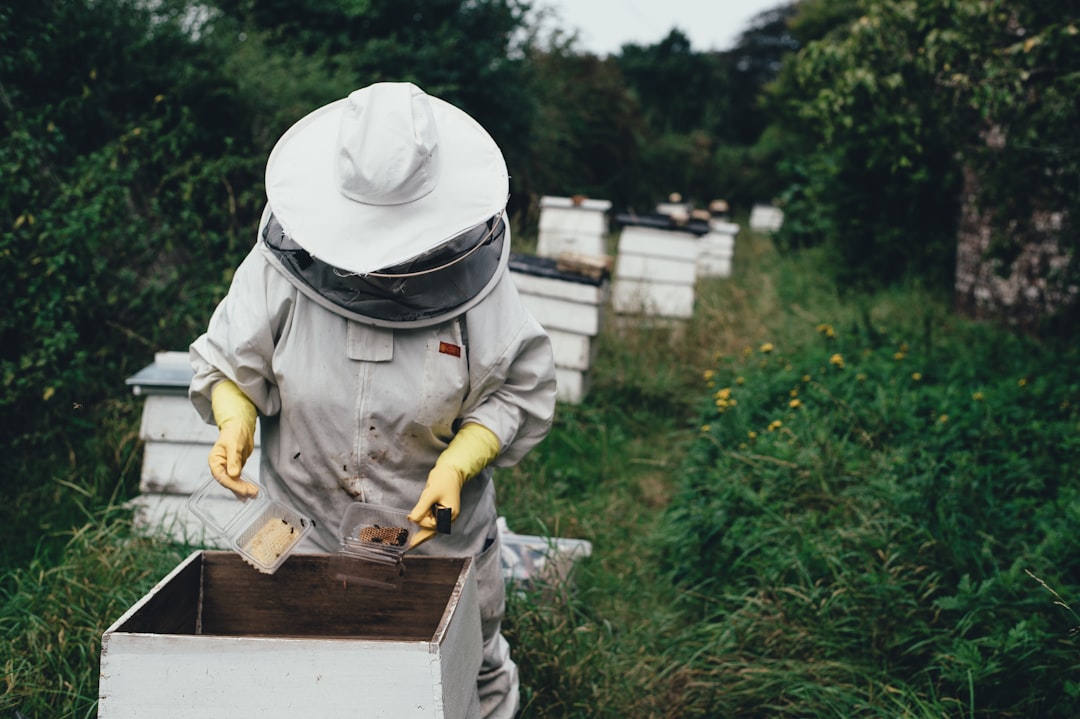Backyard beekeeping is an incredibly rewarding practice that provides fresh, homegrown honey while supporting the essential role of pollinators in local ecosystems. Whether you're interested in honey production, improving your garden’s productivity, or helping declining bee populations, keeping bees can be a fulfilling and sustainable hobby.
In this guide, we’ll explore the benefits of backyard beekeeping, how to get started, and best practices for maintaining a thriving colony.
Why Keep Bees in Your Backyard?
1. Fresh, Natural Honey
-
Home-harvested honey is free of additives and preservatives.
-
Different flowers create unique flavors, making your honey one-of-a-kind.
-
Raw honey contains antioxidants, vitamins, and antibacterial properties.
2. Improved Pollination for Your Garden
-
Bees enhance fruit and vegetable yields by pollinating plants like tomatoes, cucumbers, apples, and berries.
-
A single colony can pollinate thousands of plants daily.
3. Supporting Pollinator Populations
-
Bee populations worldwide face threats from habitat loss, pesticides, and climate change.
-
Keeping a hive helps sustain local pollinators, benefiting the entire ecosystem.
4. Low-Maintenance Farming
-
Bees require less daily attention compared to livestock or poultry.
-
Once established, a hive can thrive with periodic inspections and seasonal maintenance.
How to Get Started with Backyard Beekeeping
1. Check Local Laws and Regulations
Before setting up a hive, research local beekeeping laws and homeowner association (HOA) rules. Some areas may have restrictions on hive numbers, placement, or registration requirements.
2. Choosing the Right Beehive
There are three main types of beehives:
Hive Type Best For Pros Cons Langstroth Beginners & honey production Stackable, easy to expand Heavy to lift when harvesting Top-Bar Hobbyists & natural beekeeping Horizontal design, gentle on bees Less honey production Warre Minimalist beekeeping Mimics natural hive structure Harder to inspect💡 Best choice for beginners? The Langstroth hive is the most common and easiest to manage.
3. Acquiring Bees
You can get bees from:
-
Local beekeepers (best for acclimated bees).
-
Bee packages (shipped with a queen and worker bees).
-
Swarm rescues (a sustainable option if done safely).
Popular bee species include:
-
Italian Bees: Gentle, productive honey makers.
-
Carniolan Bees: Winter-hardy and excellent pollinators.
-
Russian Bees: Disease-resistant and good for colder climates.
4. Essential Beekeeping Equipment
-
Bee suit and gloves – Protect yourself from stings.
-
Smoker – Calms the bees for inspections.
-
Hive tool – Helps open hives and remove frames.
-
Bee brush – Gently moves bees off frames.
Caring for Your Beehive
1. Hive Placement
-
Choose a sunny, wind-sheltered area.
-
Keep hives away from high-traffic areas to avoid disturbing neighbors.
-
Provide a nearby water source (bees need water for cooling the hive).
2. Hive Inspections (Every 7–14 days)
-
Check for signs of disease or pests (mites, foulbrood, hive beetles).
-
Ensure the queen is laying eggs (healthy colonies have brood at various stages).
-
Confirm the bees have enough food stores (especially before winter).
3. Managing Pests and Diseases
Common threats to backyard beehives include:
-
Varroa Mites: Tiny parasites that weaken bees.
-
Wax Moths: Damage comb structures.
-
Foulbrood: A bacterial disease affecting larvae.
Prevent issues by:
✔ Keeping hives clean and well-ventilated.
✔ Using natural treatments like essential oils or screened bottom boards.
✔ Avoiding pesticides in your garden.
Harvesting Honey
1. When to Harvest?
-
Harvest when honeycomb is capped (covered with white wax).
-
Typically done in late summer or early fall, depending on your region.
2. How to Harvest?
-
Use a bee escape board or gently brush bees off frames.
-
Uncap honeycomb with a knife or roller.
-
Extract honey using a centrifugal honey extractor or let it drip naturally.
-
Strain and store honey in airtight jars.
💡 Tip: Leave enough honey for the bees to survive winter (40–60 lbs per colony).
Winterizing Your Hive
-
Reduce hive entrances to keep out cold drafts.
-
Provide extra food (sugar syrup or fondant) if honey stores are low.
-
Wrap hives in insulation if living in colder climates.
Frequently Asked Questions
Q: Do backyard bees sting often?
Bees are generally docile if undisturbed. Avoid swatting at them, and always wear protective gear during hive inspections.
Q: Can I keep bees in a small backyard?
Yes! Even a small urban space can support a hive as long as there’s access to flowers and a water source.
Q: How much honey can I expect?
A healthy hive can produce 30–100 lbs of honey per year, depending on nectar availability and climate.
Final Thoughts
Backyard beekeeping is a fantastic way to enjoy fresh honey, enhance garden productivity, and support pollinators. While it requires some initial learning and preparation, maintaining a hive can be a deeply rewarding experience for anyone passionate about sustainable farming and nature conservation.
🐝 Are you ready to start your backyard beekeeping journey? Let us know in the comments!

Comments
No comments yet. Be the first to comment!
You must be logged in to comment. Login